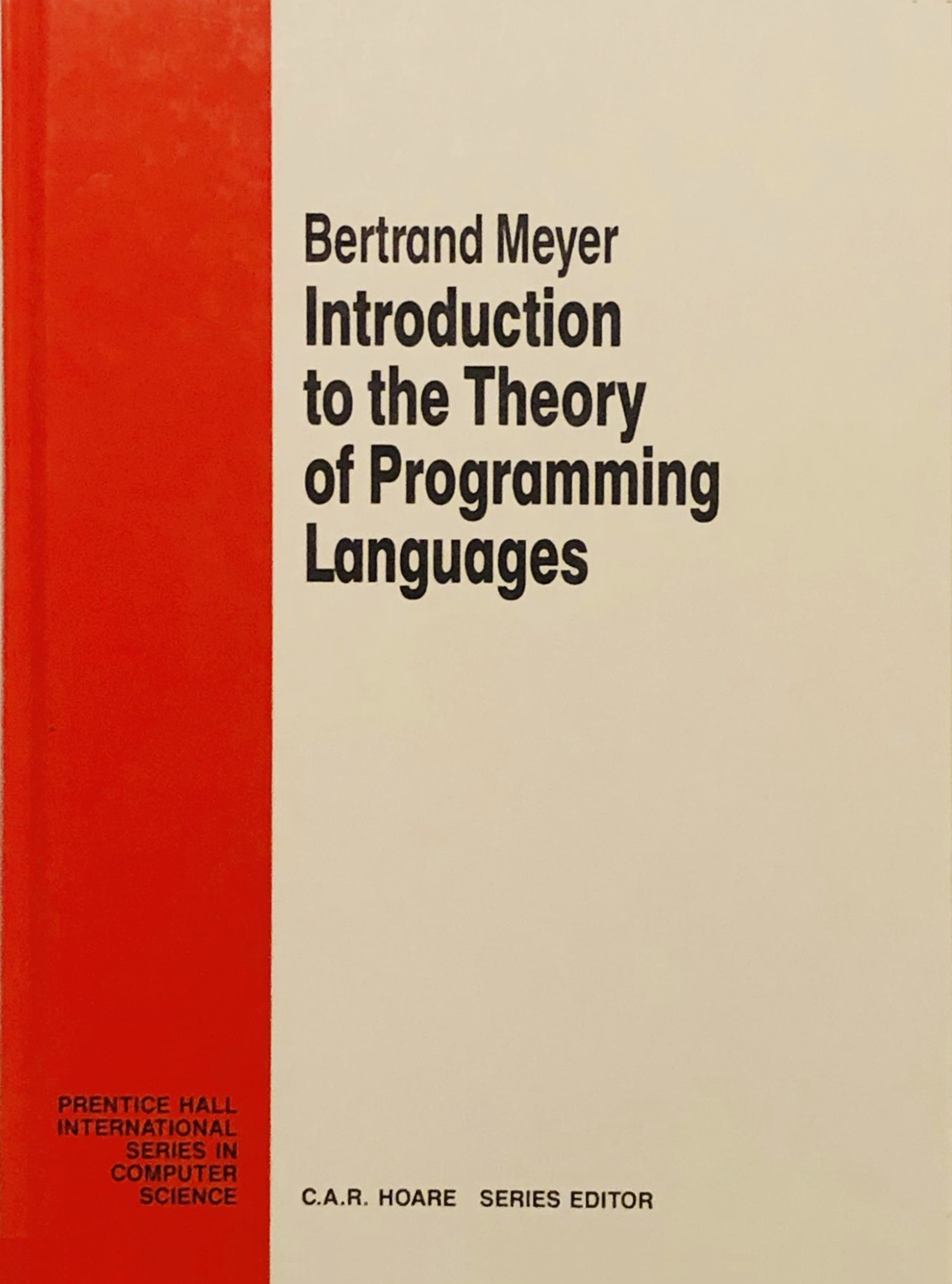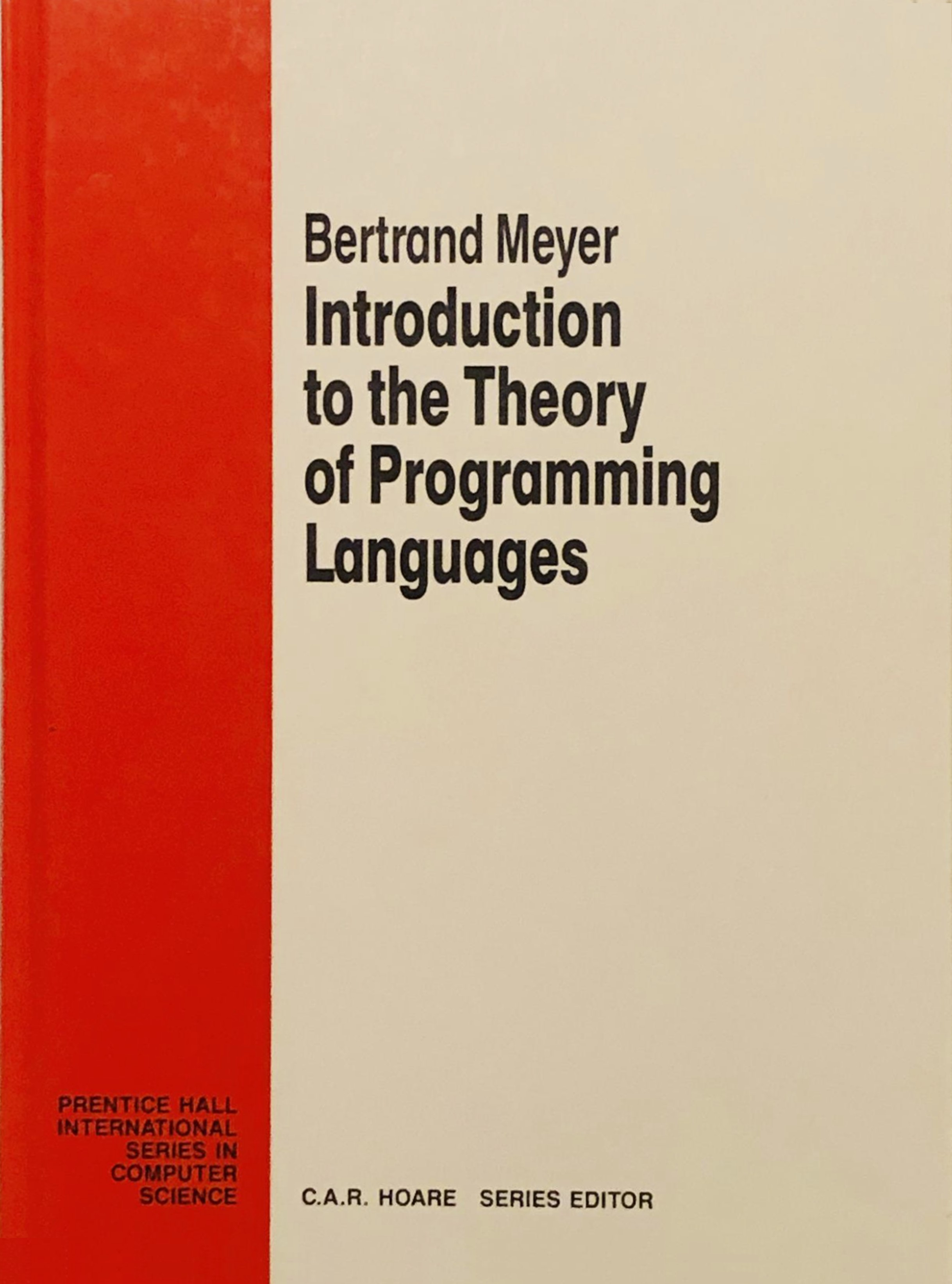 Short version: the full text of my Introduction to the Theory of Programming Languages book (second printing, 1991) is now available. This page has more details including the table of chapters, and a link to the PDF (3.3MB, 448 + xvi pages).
Short version: the full text of my Introduction to the Theory of Programming Languages book (second printing, 1991) is now available. This page has more details including the table of chapters, and a link to the PDF (3.3MB, 448 + xvi pages).
The book is a survey of methods for language description, particularly semantics (operational, translational, denotational, axiomatic, complementary) and also serves as an introduction to formal methods. Obviously it would be written differently today but it may still have its use.
A few days ago I released the Axiomatic Semantics chapter of the book, and the chapter introducing mathematical notations. It looked at the time that I could not easily release the rest in a clean form, because it is impossible or very hard to use the original text-processing tools (troff and such). I could do it for these two chapters because I had converted them years ago for my software verification classes at ETH.
By perusing old files, however, I realized that around the same time (early 2000s) I actually been able to produce PDF versions of the other chapters as well, even integrating corrections to errata reported after publication. (How I managed to do it then I have no idea, but the result looks identical, save the corrections, to the printed version.)
The figures were missing from that reconstructed version (I think they had been produced with Brian Kernighan’s PIC graphical description language , which is even more forgotten today than troff), but I scanned them from a printed copy and reinserted them into the PDFs.
Some elements were missing from my earlier resurrection: front matter, preface, bibliography, index. I was able to reconstruct them from the original troff source using plain MS Word. The downside is that they are not hyperlinked; the index has the page numbers (which may be off by 1 or 2 in some cases because of reformatting) but not hyperlinks to the corresponding occurrences as we would expect for a new book. Also, I was not able to reconstruct the table of contents; there is only a chapter-level table of contents which, however, is hyperlinked (in other words, chapter titles link to the actual chapters). In the meantime I obtained the permission of the original publisher (Prentice Hall, now Pearson Education Inc.).
Here again is the page with the book’s description and the link to the PDF:

